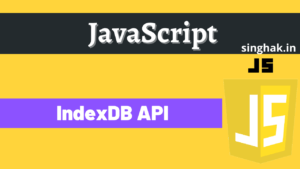In the previous blog, we have learned about python variable now we will learn the use of the operator on those variables.
Whenever we write a logical statement we need operator(s) and Operands. This logical statement called expression.
For Example 1 + 3, Operators are functionality that does something and can be represented by symbols such as + or by special keywords. Operators require some data to operate on and such data are called operands. In this case, 1 and 3 are the operands.
>>> 2 * 3 15 >>>
Table of Contents
Arithmetics Operators:

>>> 2 + 3 5 >>> 4 - 5 -1 >>> 5 - 4 1 >>> 4 * 5 20 >>> 5/4 1.25 >>> 5//4 1 >>> -5/4 -1.25 >>> -5//4 -2 >>> 4%3 1 >>> -4%3 2 >>> 4**2 16 >>>
How % (modulo) operator working on negative numbers:
The % operator in Python yields integers with the same sign as the divisor.
>>> 7 % -3 -2 >>> 7 % 3 1 >>> -7 % 3 2 >>>
To understand how % work with negative numbers, understand the below diagram. for more detail check this blog


Bitwise Operators:

>>> 6 & 3 2 >>> 6 | 3 7 >>> 6 << 1 12 >>> 6 >> 1 3 >>> ~2 -3 >>> 6 ^ 3 5 >>>
Comparison Operators:

Equality Operator:
>>> "a" == "a" True >>> 1 != 1 False >>> 1 <= 2 True >>> 2 >= 1 True >>> 1 < 3 True >>> 3 > 4 False >>> not 1 >>> False
A zero value is false. A non-zero value is true.
“or”, and “and” operator
When we apply “or” and “and” operator on non-boolean operand it will not return True or False
non-Boolean operand
x = False; y = True;
short-circuit evaluation
x and y returns False since x is False. In this case, Python will not evaluate y since it knows that the value of the expression will has to be false (since x is False). This is called short-circuit valuation.
x or y returns True. Short-circuit evaluation applies here as well.
If x and y are non-boolean operands:
| if x is | x or y | x and y |
|---|---|---|
| truth value | x | y |
| false value | y | x |
>>> x = 1 >>> y = 2 >>> x or y 1 >>> x = 0 >>> y = 1 >>> x or y 1 >>>
An empty string is false. A non-empty string is true.
>>> x = 1 >>> y = 2 >>> x and y 2 >>> x = 0 >>> y = 1 >>> x and y 0 >>>
Operator Precedence:
The following table gives the operator precedence table for Python, from the lowest precedence (least binding) to the highest precedence (most binding). This means that in a given expression, Python will first evaluate the operator’s higher precedence in the table before the operators lower precedence.
| Precedence | Operator | Description |
|---|---|---|
| lowest precedence | lambda | Lambda Expression |
| or | Boolean OR | |
| and | Boolean AND | |
| not x | Boolean NOT | |
| in, not in | Membership operator | |
| <, <=, >, >=, !=, == | Comparisons | |
| | | Bitwise OR | |
| ^ | Bitwise XOR | |
| & | Bitwise AND | |
| <<, >> | Shift | |
| +, – | Addition, Substation | |
| *, /,% | Multiplication, Division, and Remainder | |
| +x, -x | Positive and Negative | |
| ~x | Bitwise NOT | |
| ** | Exponentiation | |
| x.attribute | Attribute reference | |
| x[index] | Subscription | |
| x[index:index] | Slicing | |
| f(arguments …) | Function call | |
| (expressions, …) | Binding or tuple display | |
| [expressions, …] | List-display | |
| {key: datum, …} | Dictionary display | |
| highest precedence | `expressions, …` | String conversion |
By default, the operator precedence table decides which operators are evaluated before others. However, if you want to change the order in which they are evaluated, you can use parentheses.
For example, if you want the addition to being evaluated before multiplication in an expression, then you can write something like (2 + 3) * 4.
>>> 2 + 3 * 4 14 >>> (2 + 3) * 4 20 >>>
Operators are usually associated from left to right i.e. operators with same precedence are evaluated in a left to right manner. Some operators like assignment operators have right to left associativity
Associativity
For example, 2 + 3 + 4 is evaluated as (2 + 3) + 4. Some operators like assignment operators have right to left associativity i.e. a = b = c is treated as a = (b = c).
>>> 2 + 3 - 2 3 >>> (2 + 3) -2 3 >>>
Python supports a shorthand augmented assignment notation for these arithmetic and bitwise operators. i.e. x += y is equivalent to x = x + y.
>>> x = 3 >>> y = 7 >>> x += y >>> x 10 >>> x = 3 >>> y = 7 >>> x = x + y >>> x 10 >>>
Summary:
We have learned how to use operators, operands and expressions – these are the basic building blocks of any program.



